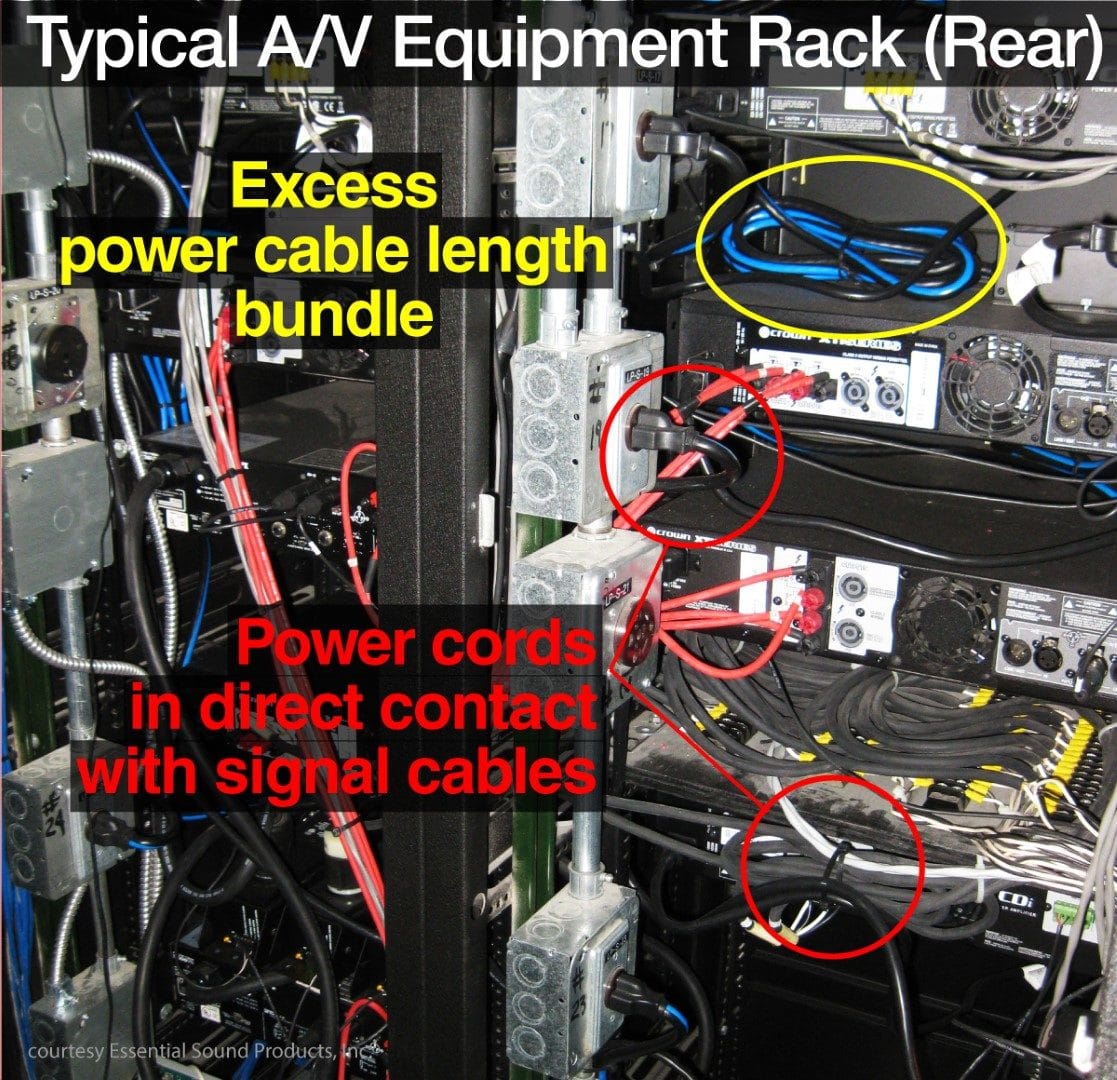By Michael D. Griffin
A great deal of attention has been paid to various aspects of ac power systems for professional audio/video installations. Over the years, the industry has developed a list of widely accepted, if not formally recognized, “best practices.”
On an ac mains system level, these practices include providing dedicated circuits to isolate the audio system from other systems and appliances that have electric motors or transformers. For example, you wouldn’t want to have an HVAC system or refrigerator on the same ac mains circuit as your audio system. “Star” grounding all ac mains outlets to a common origin to eliminate potential differences is a widely accepted practice to achieve the lowest possible noise floor.
An entire industry has developed to address the need for “clean” power at the point where audio components interface with the ac mains. Products include voltage stabilizers, power regenerators, balanced power systems and traditional power conditioning.
In this context, with so much attention and resources dedicated to supplying clean ac mains power to professional audio systems, it seems a cruel irony that the power cable has received practically zero attention or industry recognition of its importance. At best, power cord quality is not given a second thought. The included power cable that the manufacturer supplies is used without questioning its build quality. At worst, industry professionals resist the idea that a power cord could possibly affect sound quality, refusing try anything other than the OEM cord. Consequently, power cords are the most overlooked part of an audio system. Let’s discuss the reasons ignoring power cables in new system specifications and existing system troubleshooting could result in misdiagnoses and significant unnecessary expenditures.
First, let’s get real. Regardless of the cost of the audio/video component, you’re going to receive the same cheap power cord, employing low-quality components such as weak folded brass plug pins. Conductor terminations are typically crimped to make electrical contact and provide mechanical retention. The molded connector ends provide minimal strain relief. A loose crimp or gap between folded metal surfaces is all it takes to cause a buzz noise in your audio system.
Ever experience hum noise in your instrument amplifier when playing in venues with fluorescent lighting? This occurs because the lighting ballast radiates interference, which gets picked up by the power cord. Some of our customers have even reported hearing faint radio station broadcast through their audio system that was later determined to have been picked up by the power cord. Modern audio systems are exposed to both internal and external sources of RFI (Radio Frequency Interference) and EMI (Electro-Magnetic Interference). A power cord, like other unshielded audio cables, can act as an antenna and pick up interferences, introducing them into your audio system.
The lack of shielding also makes power cables one of the greatest “offenders” in terms of being a source of EMI. Power cables radiate EMI. A strong magnetic field surrounds the cable and can cause distortion and noise in nearby signal cables!
Because power cords are typically the last thing considered when trying to troubleshoot sound quality and noise issues, one can spend a lot of time and money on other parts of the audio system, trying to address these issues but, not getting at the root cause. When troubleshooting sound quality and noise issues in your audio system, include the power cables in your investigation. Don’t be like many customers we’ve worked with who before contacting us made significant investments in replacing major components, yet still had unresolved noise and fidelity issues with their audio system.
What can you do to prevent or address these issues? Here is my list of best practices in the selection and use of ac power cords for audio systems.
1. Use shielded power cords specifically designed for use in audio systems, for critical component applications.
A high quality, braided copper shielded power cord will address concerns about the cable potentially picking up interference as well as emitting EMI.
“Critical” component applications in a typical PA system for houses of worship include the power amplifiers for loudspeakers (including subwoofers), stage monitors, instrument amplifiers, microphone pre-amplifiers and the mixing/control console.
Care must be exercised in selecting a shielded power cord for audio applications. Standard shielded power cables are not suitable for use in audio systems. The reason is because typical application of the shield in the cable section will cause audible distortions in bass frequencies. The shield exacerbates the 2nd harmonic of the ac mains carrier frequency, which in North America is 60Hz. Therefore, a 120Hz “bump” or emphasis will occur in the frequency response.
2. Specify “hospital grade” power cords for less critical applications.
Hospital grade is the only formally recognized standard for higher quality, more robust built power cords. Hospital grade power cords are identified by a green dot, typically located on the molded plug surface surrounding the blades. Hospital grade plugs are required to have solid blades and an internal cable retention device or strain relief to prevent any stress to the plug’s internal connections. They must meet more stringent requirements for abrupt plug removal, ground pin retention, fault current, terminal strength, ground resistance, and various durability and impact tests.
For similar reasons, I also recommend the use of hospital grade receptacles. Some receptacles also have “isolated ground” contacts where the ground is separated from the metal strap that forms the backing. These outlets will either have a separate screw for connecting the ground wire or a “pigtail” wire. Outlets with isolated ground are identified by an orange triangle.
3. Route power cables away from signal cables whenever possible.
The strength of the magnetic field diminishes quickly with distance away from the cable centerline. If necessary, use non-magnetic mechanical spacers to create space.
4. When close spacing cannot be avoided, route power cables and signal cables at right angles to each other.
The magnetic field follows the direction of the power cable, so routing signal cables at right angles minimizes the potential interference.
Michael D. Griffin is president of Essential Sound Products, Inc., a custom designer and manufacturer of high-performance ac power components for all audio and video applications, www.essentialsound.com.












